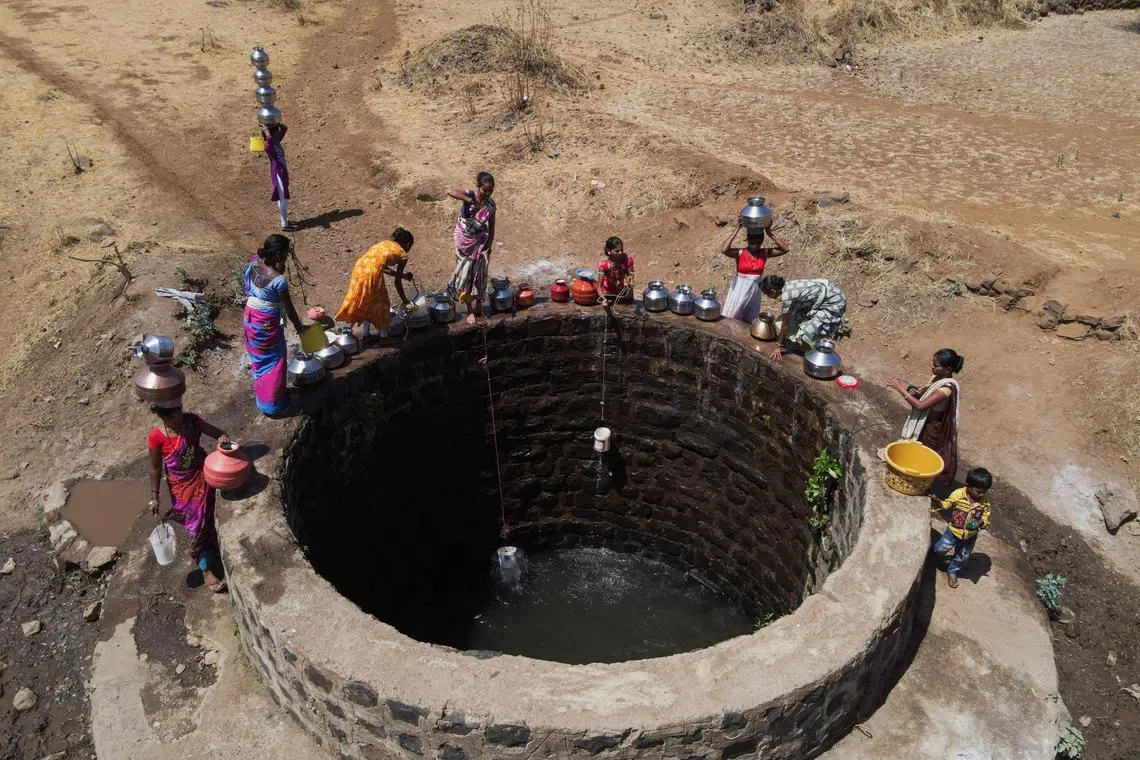Parts of India bake in hottest April on record as heatwave kills 9
Sign up now: Get insights on Asia's fast-moving developments

Fewer thunderstorms and an anti-cyclonic circulation near India’s south-eastern coast were said to be causing heatwaves.
PHOTO: REUTERS
Follow topic:
NEW DELHI – Eastern India experienced its hottest April on record as a heatwave scorched parts of the country amid a general election, killing at least nine people, and the weather office on May 1 forecast above normal temperatures for May too.
Searing heat has been cited by political analysts as one of the reasons for low voter turnout
Heatwave conditions are, however, forecast to abate gradually in the coming days.
The mean temperature in eastern India was 28.12 deg C in April, the warmest since records began in 1901, with experts blaming a combination of factors.
“In an El Nino year, you get more heating,” said Mr Mrutyunjay Mohapatra, chief of the India Meteorological Department, referring to a climate pattern that typically leads to hot and dry weather in Asia and heavier rains in parts of the Americas.
He said fewer thunderstorms and an anti-cyclonic circulation near India’s south-eastern coast were causing heatwaves.
“Wind blows from land towards the sea during an anti-cyclone… so land becomes warmer and temperature rises.”
In April, the eastern Indian state of West Bengal recorded the most number of heatwave days for the month in the last 15 years, followed by the neighbouring coastal state of Odisha where heat conditions were the worst in nine years.
The authorities have also declared a rare heatwave in the south-western coastal state of Kerala, where at least two deaths have been recorded due to soaring temperatures.
Central and north-western India, which includes major wheat-producing states that typically witness heatwaves this time of the year, have been largely spared due to intermittent thunder showers in April, Mr Mohapatra said.
The weather office said rainfall in May is likely to be normal, and that it expects more showers during the second half of the monsoon season in August and September as compared with June and July due to the La Nina climate pattern, which typically brings higher rainfall to India.
Monsoon is the lifeblood of India’s economy, delivering 70 per cent of the rain needed to water crops and recharge reservoirs, and weather forecasters have predicted that India will receive above normal monsoon rainfall in 2024. REUTERS

